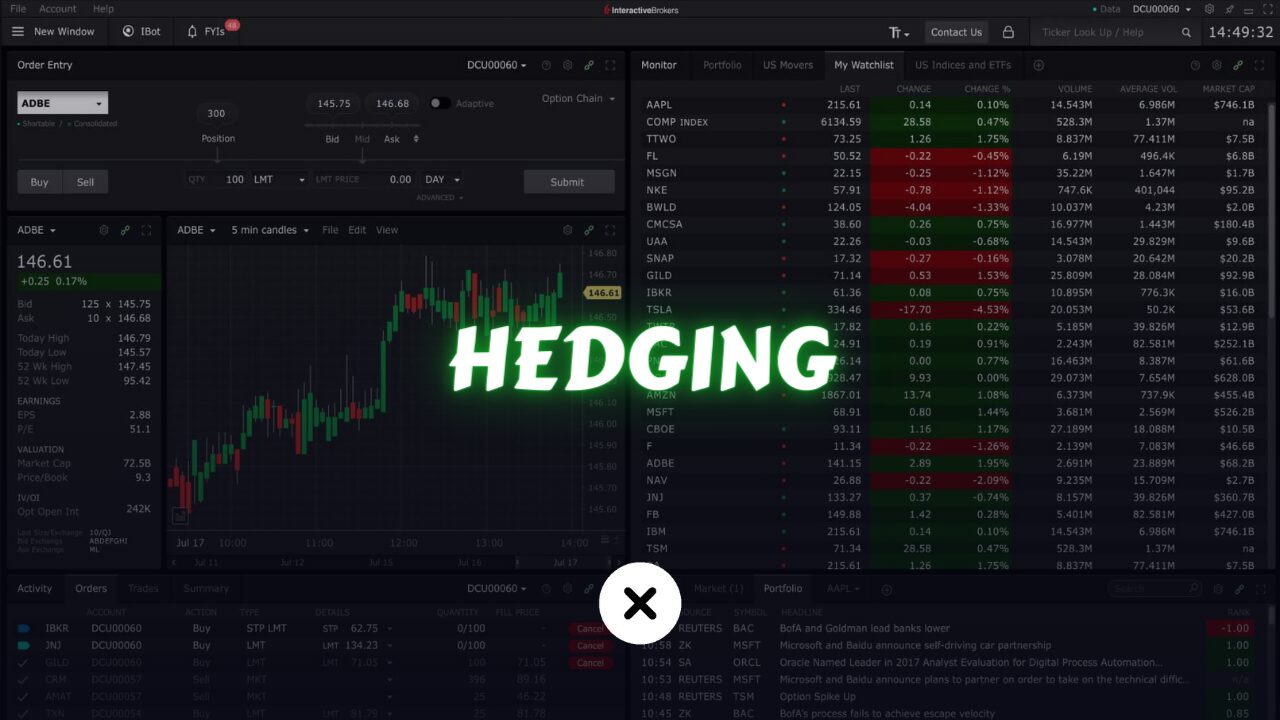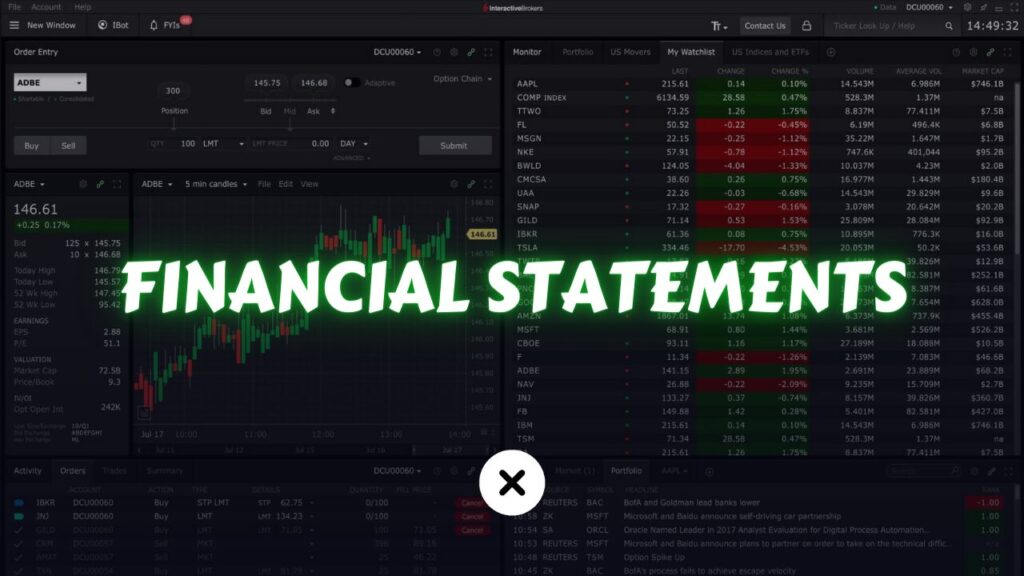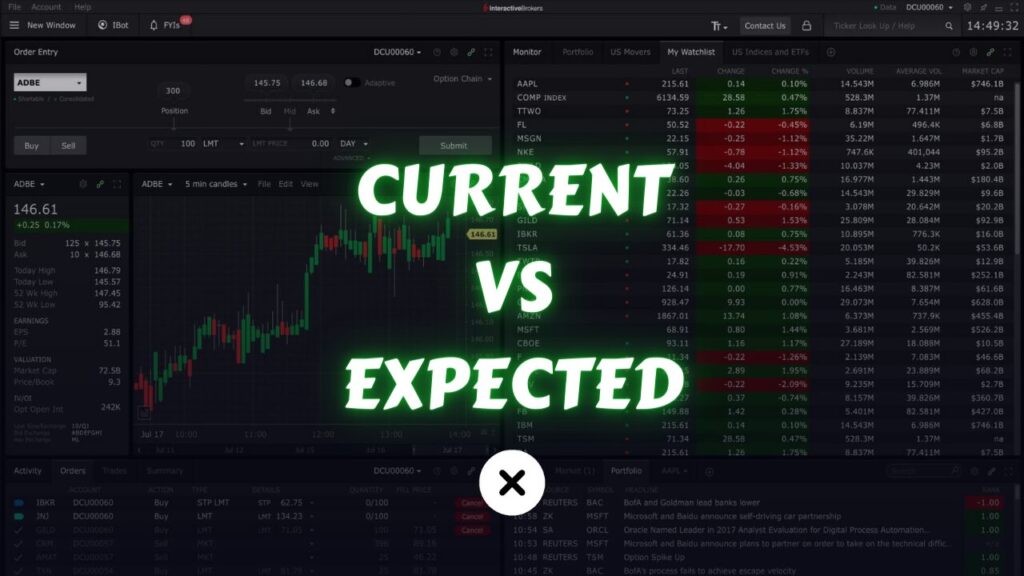
Hedging is a risk management strategy employed in trading and investing to mitigate potential losses resulting from adverse price movements in financial markets. Essentially, it involves taking opposite positions in financial instruments with the aim of offsetting the risks associated with other positions in a portfolio.
Basically, it’s reducing your risk with your current position by getting into another position.
Imagine you own an ice cream shop. During sunny days, you expect to make lots of money selling ice cream. But what if it rains all summer and nobody wants ice cream? To protect yourself, you decide to open an umbrella store next to your ice cream shop.
Now, if it’s raining and nobody’s buying ice cream, at least you’re selling umbrellas and making money. And if it’s sunny and everyone’s craving ice cream, your umbrella store might not get much business, but your ice cream shop will thrive.
So, by having both an ice cream shop and an umbrella store, you’re hedging your revenue. That means the weather won’t have as much impact on how much money you make.
Just like with the ice cream and umbrella stores, you can also hedge the profits of your stocks.
Imagine you own stocks in a company, and you expect to make a lot of money when the stock prices go up. But what if the market suddenly takes a downturn and your stocks lose value? To hedge your risk, you might invest in something else, like bonds or gold.
Now, if the stock market goes down and you lose money on your stocks, at least you’ll gain value on your bonds or gold investments. And if the stock market goes up, your bond or gold investments might not do as well, but your stocks will bring in profits.
So, by diversifying your investments and having a mix of stocks and other assets, you’re hedging your profits. This means that no matter what happens in the stock market, you have a better chance of protecting your overall capital.
Hedging is not about profit generation but rather about risk mitigation. Its primary aim is to cushion existing investments from potential losses, thereby preserving capital in the face of market uncertainties.
It’s a mechanism that allows traders to safeguard their investments from the caprices of the market. It involves taking calculated positions in financial instruments to counterbalance the risks inherent in other positions. Essentially, it’s about insulating one’s portfolio from volatility-induced shocks.
Let’s break it down further:
- Existing Position: This refers to your current investment, whether it’s a stock, bond, commodity, or any other tradable asset.
- Offsetting Position: This is the new position you take to hedge your existing one. It typically involves an asset with a negative correlation to your original holding. Negative correlation means that when the price of your existing position goes down, the price of the hedging position tends to go up, and vice versa.
By strategically combining these two positions, you create a safety net that helps to limit potential losses.
Why Hedge?
While the potential for high profits is undeniably attractive, most investors aren’t comfortable with excessive risk. Hedging offers several advantages:
Reduced Risk: The primary benefit of hedging is the ability to mitigate downside risk. By taking an offsetting position, you limit the potential losses if the market moves against you.
Portfolio Protection: Hedging can help safeguard your overall portfolio from significant losses. Even if one of your investments experiences a downturn, the gains from your hedge can help offset those losses, maintaining a level of stability.
Peace of Mind: Knowing you have a hedge in place can provide peace of mind, especially during volatile market conditions. It allows you to stay invested and potentially benefit from future upswings without constant worry about immediate losses.
Here’s an example to illustrate the benefits of hedging:
Imagine you own 100 shares of a tech company stock that you believe has long-term growth potential. However, you’re concerned about a potential market correction in the near future. To hedge, you could buy a put option on the same stock.
A put option gives you the right, but not the obligation, to sell the stock at a predetermined price (strike price) by a certain date (expiry date). If the stock price falls, you can exercise the put option and sell your shares at the strike price, minimizing your losses.
Important Note: Hedging isn’t a guarantee against losses. While it can significantly reduce downside risk, it won’t completely eliminate it. Additionally, hedging comes with its own costs, which we’ll discuss later.
Types of Hedging Strategies
There are various hedging strategies you can employ depending on your specific needs and risk tolerance. Here’s a breakdown of some common approaches:
Using Derivatives for Hedging
Derivatives are financial contracts whose value is derived from the underlying asset (stock, commodity, currency, etc.). They offer a flexible and powerful toolbox for hedging strategies.
Here are three key derivatives used for hedging:
1. Stock Options
Puts:
As mentioned earlier, buying put options allows you to set a minimum selling price for your stock. Let’s say you own 100 shares of XYZ company and are concerned about a potential price decline. You can buy a put option with a strike price of $50 per share and an expiry date in six months.
This gives you the right to sell your shares at $50 each, even if the market price falls below that level. If the stock price plummets, you can exercise the put option and sell your shares at $50, limiting your losses.
Calls:
Buying call options can hedge against missing out on potential upswings. Imagine you’re bullish on a particular stock but want to limit your initial investment. You can buy a call option with a strike price of $40 per share and a one-year expiry.
This grants you the right to buy the stock at $40 anytime before the expiry date. If the stock price surges to $70, you can exercise the call option and purchase additional shares at the predetermined ($40) price, effectively locking in a significant profit.
2. Futures Contracts
A futures contract is an agreement between two parties to buy or sell an asset at a predetermined price on a specific future date. This is a commonly used tool for hedging against price fluctuations in commodities like oil, currencies like the Euro, or even stock market indices.
For instance, suppose you’re an airline heavily reliant on jet fuel. You’re concerned about a potential rise in oil prices, which would significantly impact your operating costs. To hedge, you can enter into a futures contract to buy oil at a fixed price six months down the line. This way, even if the actual oil price spikes in the interim, you’re guaranteed to pay the pre-agreed price, protecting your profit margins.
3. Forward Contracts
Similar to futures contracts, forward contracts are customized agreements between two parties to buy or sell an asset at a predetermined price on a specific future date. However, unlike standardized futures contracts traded on exchanges, forward contracts are private agreements tailored to the specific needs of the counterparties.
Other Hedging Strategies
Beyond derivatives, several other strategies can be employed for effective hedging:
1. Portfolio Diversification
Portfolio diversification involves spreading your investments across different asset classes like stocks, bonds, real estate, and commodities.
The idea is that when one asset class experiences a downturn, others might perform well, mitigating the overall portfolio losses. For example, if the stock market crashes, historically, government bonds tend to rise in value, providing a buffer against losses in your stock holdings.
2. Sector Hedging
This strategy involves taking offsetting positions in different sectors of the market. Imagine you’re heavily invested in technology stocks and are concerned about a tech bubble.
You could hedge by investing in a bond fund or a sector fund focused on defensive industries like consumer staples or utilities. These sectors tend to be less volatile and might even outperform during a tech stock correction.
3. Pairs Trading
This pairs trading strategy involves identifying two highly correlated assets with a historical tendency to move in opposite directions. You would then take a long position (buy) on the asset expected to rise and a short position (borrow and sell) on the asset expected to fall.
The goal is to profit from the price spread between the two assets, regardless of the overall market direction. For example, you might identify two competitor companies in the same industry whose stock prices tend to move inversely.
4. Cash Equivalents
Investing a portion of your portfolio in cash equivalents like money market accounts or short-term government bonds can act as a hedge during volatile market conditions. While offering minimal returns, these highly liquid assets provide a safe haven to park your funds and potentially re-enter the market when opportunities arise.
Now, Choosing the right hedging strategy depends on several factors, including:
- Your risk tolerance: How much risk are you comfortable with?
- The asset class you’re hedging: Are you hedging stocks, commodities, currencies, or a portfolio?
Disadvantages of Hedging
Cost: Hedging strategies often involve additional costs. Buying options, entering into futures contracts, or maintaining short positions all come with associated fees and expenses. These costs can eat into your potential profits.
Reduced Potential Returns: Hedging can limit your potential upside. By setting a minimum selling price with put options or a maximum buying price with call options, you might cap your profits if the market experiences a significant surge.
Complexity: Some hedging strategies, like pairs trading, can be complex and require a deep understanding of the market and technical analysis skills. This can be challenging for beginner investors.
Conclusion
Hedging is a valuable tool for managing risk and protecting your investments. However, it’s not a magic bullet. Carefully consider your risk tolerance, the asset class you’re hedging, and the associated costs before implementing a hedging strategy.
By understanding different hedging techniques and their pros and cons, you can make informed decisions to navigate the ever-changing market landscape and optimize your long-term investment success.



